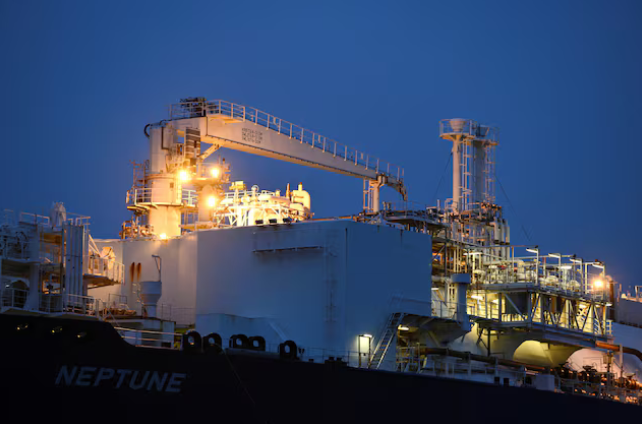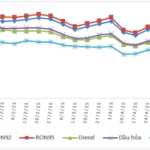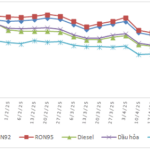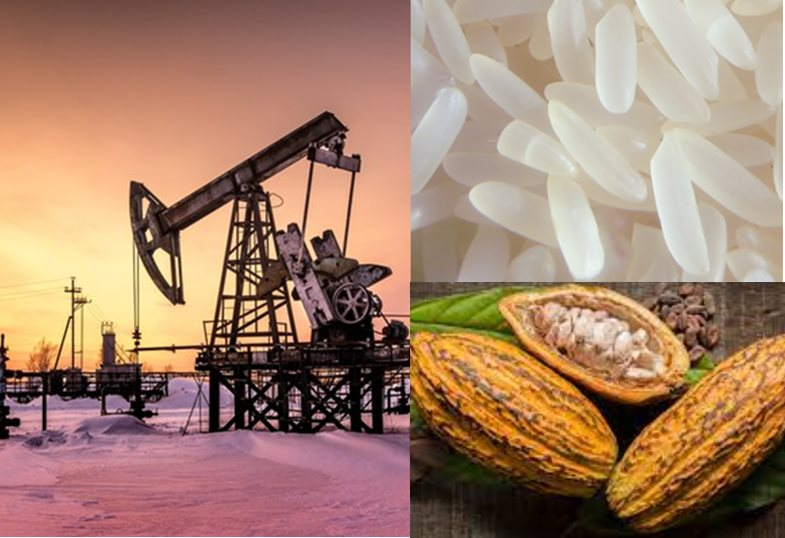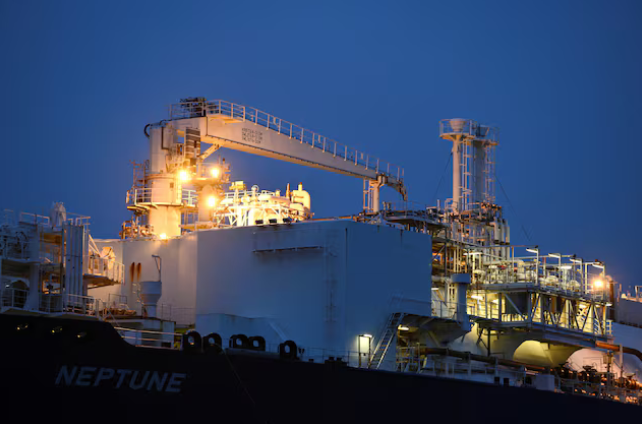
Illustrative image
Crude Oil Faces New Volatility
Crude oil prices surged 13% after Israel-Iran tensions flared up last week, reaching their highest level since early January as concerns mounted over potential major supply disruptions in the Middle East.
The rapid surge was partly due to the spare capacity among OPEC and its allies to pump more oil to make up for any disruptions currently matching Iran’s output.
Analysts and industry sources said Saudi Arabia and the United Arab Emirates are the only two members of OPEC+ with the ability to quickly ramp up production and could pump an additional 3.5 million barrels per day (bpd). Iran’s current output stands at around 3.3 million bpd, with exports of over 2 million barrels of oil and fuels per day.
However, fears of Iranian oil facilities being targeted pushed prices higher. Brent crude, the global oil benchmark, recently rose nearly 7% to over $74 per barrel during trading on June 13th.
When supply is impacted, it requires other producers to step up and make up for the shortfall. This leaves very little spare capacity to deal with other disruptions – which could arise from conflicts, natural disasters, or accidents. The precondition is that Iran does not take retaliatory measures against the Israeli airstrikes.
Iran has previously threatened to disrupt transit through the Strait of Hormuz if attacked. This strait is the outlet from the Persian Gulf for about 20% of the world’s oil supply, including exports from Saudi Arabia, the UAE, Kuwait, Iraq, and Iran itself.
Jorge Leon, head of geopolitical analysis at Rystad and a former OPEC official, said: “If Iran retaliates by disrupting oil flows through the Strait of Hormuz or targeting regional oil infrastructure, the market reaction could be far more severe. This factor has the potential to push prices up by $20 per barrel or more.”
OPEC+ Faces Output Conundrum
The sudden shift in calculations by oil investors this week comes after months of OPEC and its allies increasing output, which had worried investors about a potential oversupply and price crash. Saudi Arabia was the driving force behind the group’s accelerated production, partly to punish allies who pumped more oil than agreed under the OPEC+ deals.
This increase has strained the ability of some members to produce more, causing them to fall short of their new targets. Even after the recent increases, the group is still withholding about 4.5 million bpd, which was agreed upon over the past two years to balance supply and demand.
Analysts say that after years of production cuts and reduced investment in oil fields due to the COVID-19 pandemic, these fields and facilities may no longer be able to ramp up quickly.
Western sanctions on Iran, Russia, and Venezuela have also led to reduced investment in oil production in these countries.
JP Morgan said in a note: “After the price surge in July, most OPEC members, except Saudi Arabia, appear to be producing at or near maximum capacity.”
A senior industry source working with the OPEC+ producers said that outside of Saudi Arabia and the UAE, the spare capacity is insignificant.
Saudi Arabia’s output is expected to rise to above 9.5 million bpd in July, giving the kingdom the ability to boost production by an additional 2.5 million bpd if it chooses to. However, this capacity has only been achieved once in the past decade. Saudi Arabia has also halted investment in expanding spare capacity beyond 12 million bpd as the kingdom redirects resources to other projects.
Russia, the second-largest producer in OPEC+, claims it could pump over 12 million bpd. However, JP Morgan estimates that Moscow can only increase production by 250,000 bpd to 9.5 million bpd in the next three months and will struggle to boost output further due to sanctions.
The UAE has stated that its maximum oil production capacity is 4.85 million bpd and informed OPEC that its crude output in April was just over 2.9 million bpd, a figure largely confirmed by OPEC’s secondary sources.
Analyst Aldo Spanjer of BNP said: “I think the spare capacity is significantly lower than what is usually quoted.”
The Ever-Increasing Gasoline Prices: A Burning Concern
The latest fuel price review has led to an upward adjustment in prices. Specifically, E5RON92 gasoline increased by VND 199 per liter, while RON95-III gasoline witnessed a surge of VND 269 per liter. Similarly, various types of oil also experienced hikes ranging from VND 227 per liter to VND 283 per kilogram compared to the current base prices.
The Ultimate Guide to Investing: Oil Surges to 2-Month High, Gold Shines, Sugar Plunges to Near 4-Year Low
As of the market close on June 11, 2025, oil prices surged over 4% to a two-month high amid escalating Middle East tensions. Gold prices maintained their upward trajectory, buoyed by lower-than-expected US inflation data and expectations of an early Fed rate cut. Copper prices, however, took a hit due to concerns over Chinese demand and protracted trade tensions. Raw sugar plunged to a near four-year low, while coffee prices also witnessed a decline.
The Rising Tide of Fuel Prices: A Global Concern
On June 5th, a price hike was observed across the board for petroleum products. Specifically, E5RON92 gasoline increased by VND 67 per liter, while RON95-III gasoline witnessed a surge of VND 133 per liter. Similarly, various types of oil experienced increments ranging from VND 176 to VND 284 per liter, except for mazut 180CST 3.5S, which saw a decrease of VND 86 per kilogram compared to the current base price.
Fuel Prices: A Tale of Two Stories as Gas Prices Rise Slightly and Oil Takes a Tumble
The domestic gasoline and oil prices witnessed a mixed trend during the operating session on May 29th. Notably, gasoline products experienced a slight increase, ranging from VND 33 to VND 74 per liter, while oil products witnessed a significant decrease, with prices dropping by VND 206 to VND 269 per liter compared to the current base price.


























